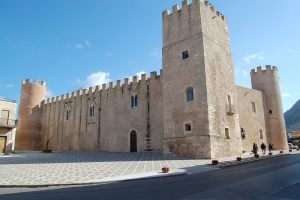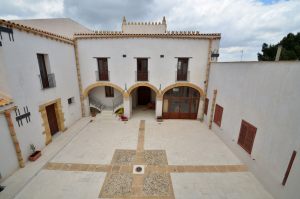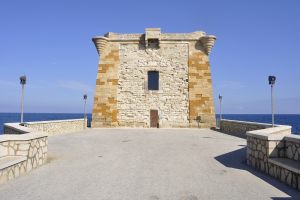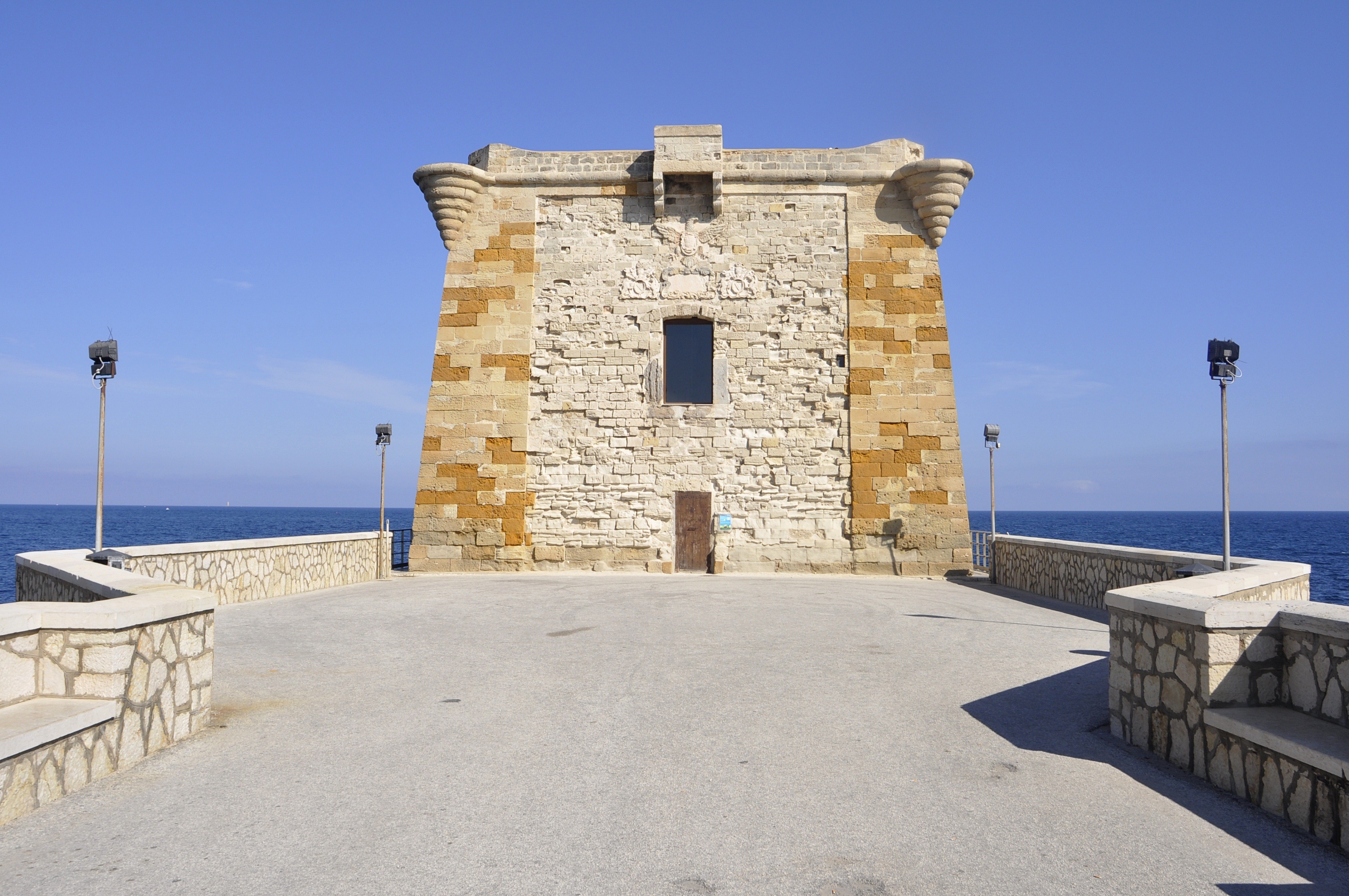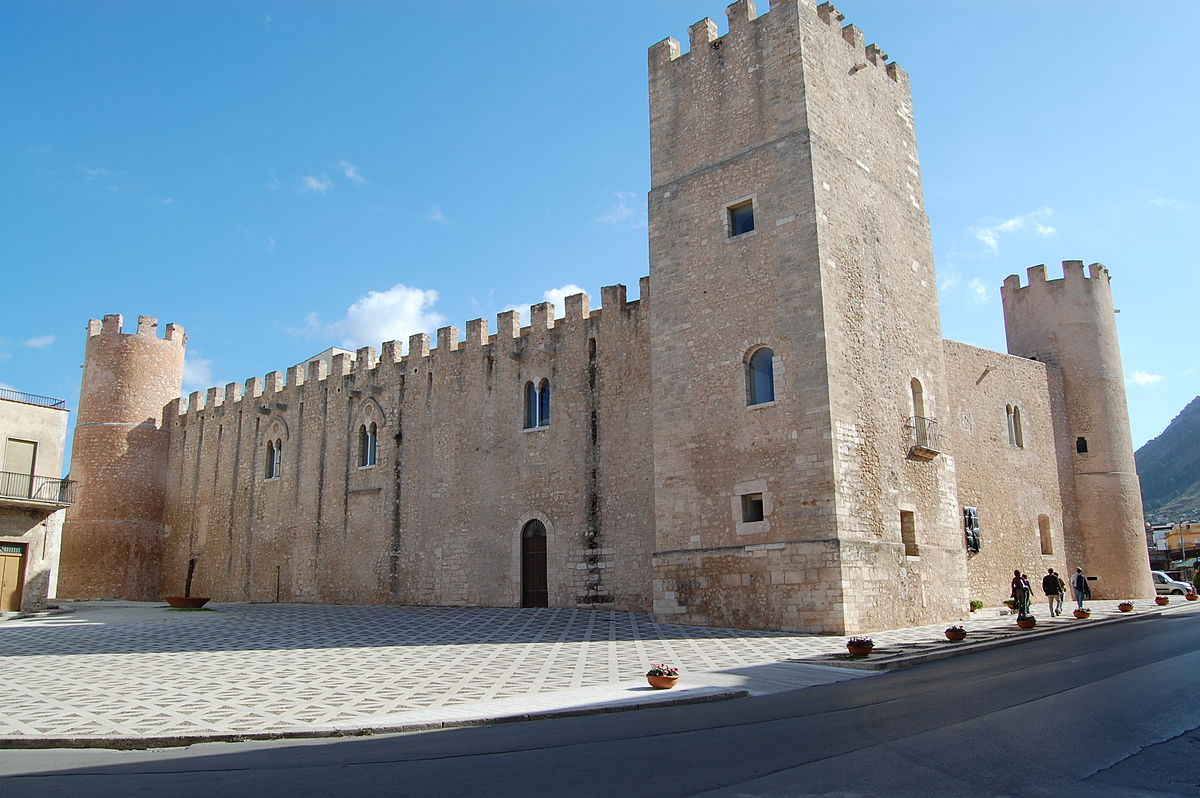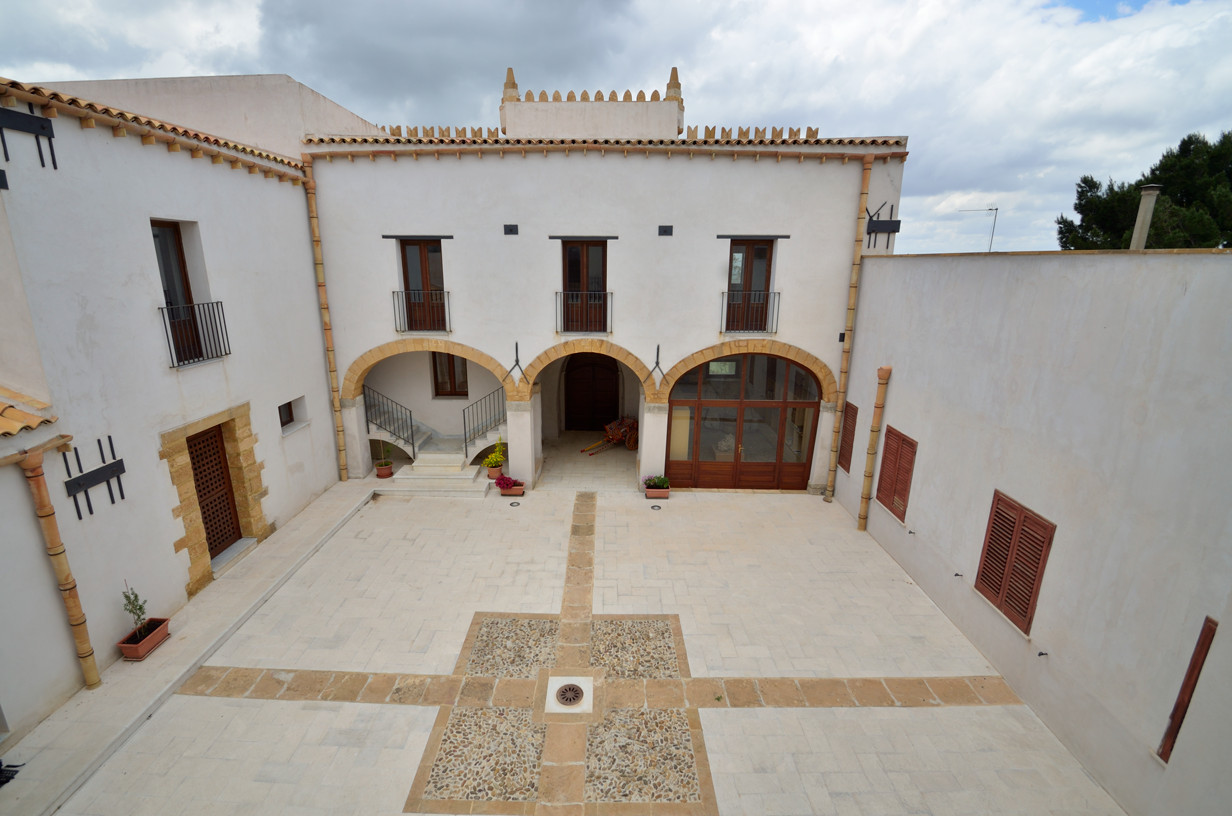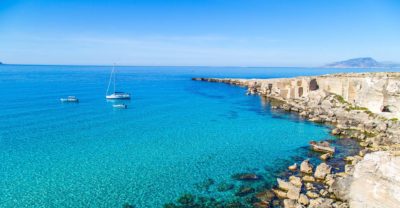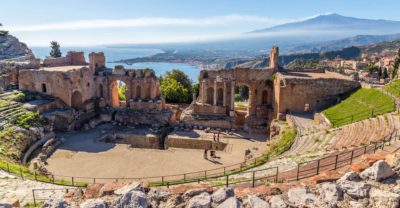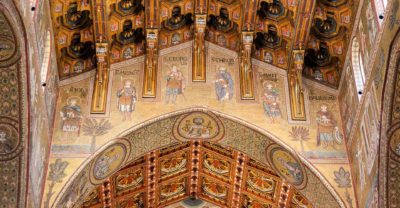Towers and Castles
Trapani
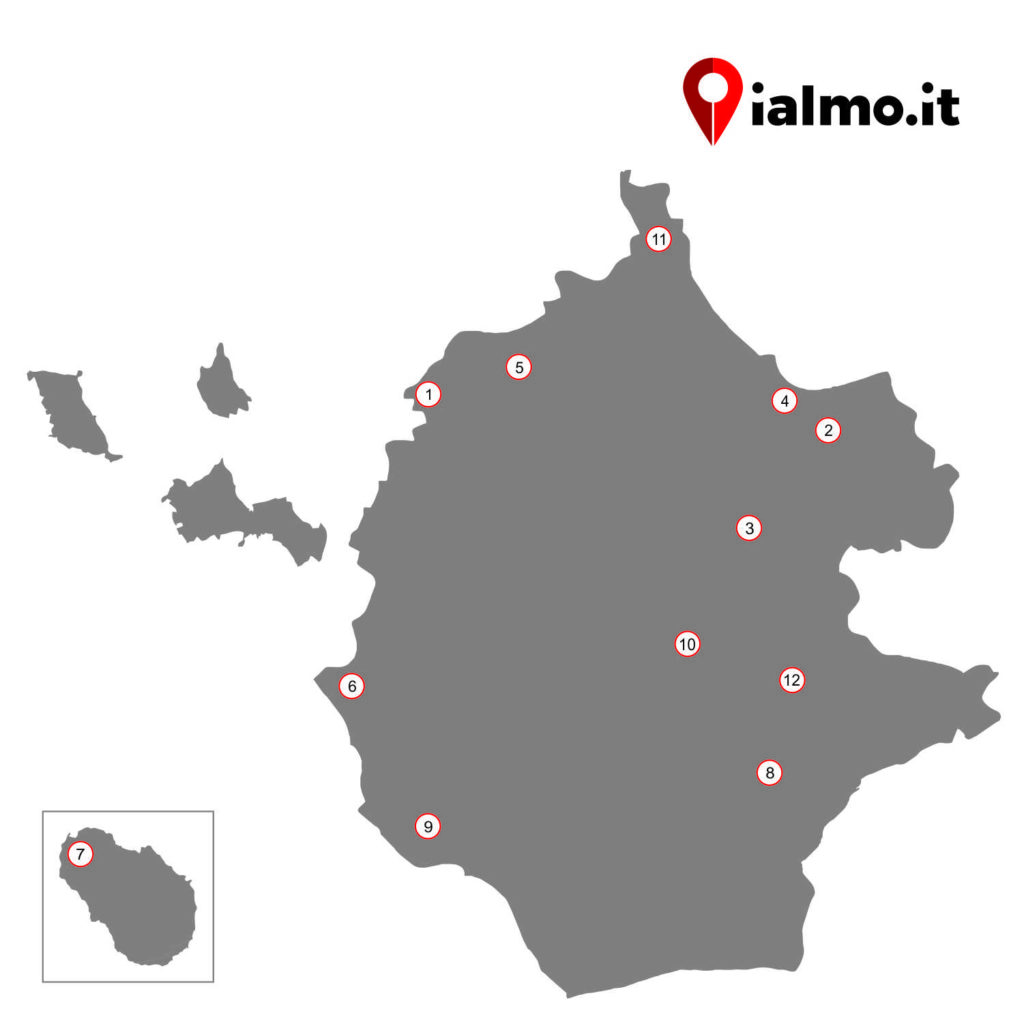
Torre di Ligny, Trapani: built in 1671 by order of the viceroy Don Claudio La Moraldo, prince of Ligny, the Tower, restored in 1979, is now home to the Museum of Prehistory. Designed by Carlos De Grunembergh, the building has a quadrangular shape that narrows upwards and is equipped with four masonry watchtowers. The Castle of Terra and on the islet of the Colombaia the Castello di Mare (also known as Torre Colombaia or Torre Peliade), both dating back to the 12th century, can still be seen in Trapani. Also interesting are the defensive bastions of Sant’Anna and that of the Impossible (partly built on the water), ancient fortifications erected in the sixteenth century to protect the city’s territory.
Castle of the Counts of Modica, Alcamo: was built in the fourteenth century in the vast square of the Republic at the behest of Henry and Federico Chiaramonte, successors of the Peralta in the lordship of Alcamo. After several changes of ownership and restructuring, in 1828 the Castle passed into possession of the municipality of Alcamo and in 1870 it was turned into a prison. After the renovation work carried out at the beginning of 2000, the Castle now houses the Ethnic, Agricultural and Pastoral Museum. The Castle of Ventimiglia, the Castle of Calatubo and the Calandrino Tower should also be mentioned in Alcamo.
Castle of Eufemio, Calatafimi Segesta: built around 1200, it rises in the oldest and most western part of the city probably on the ruins of another more ancient castle. Today, unfortunately, only some parts of the two towers remain on the frontispiece, part of the curtain connecting them, the two strong arches of the vestibule, the long gallery below the western part of the court floor and the two embrasures on the twelve o’clock.
Arab-Norman castle, Castellammare del Golfo: also known as “Castle at sea” because until the eighties it was lapped by the sea, the Castle was probably built by the Arabs in the 10th century as an annex of the most important manor of Calathamet (Castello dei Bagni) which rose near the thermal springs of Segesta Ponte Bagni. Fortified by the Swabians through the addition of towers and defensive walls, following the fights between the Angevins and the Aragonese, it was destroyed by Frederick II of Aragon and then rebuilt and equipped in time with four crenellated towers (3 of which are no longer existing today) ). Finally, we point out in the territory of Castellammare the Tower of the bay of Guidaloca, the Bennistra Tower, the Tower of the tonnara of Scopello, the Tower of Scopello and the Castle of Inici.
Castle of Venus, Erice: it is a Norman castle of the XIIth century that rises on the ruins of an Elymian-Phoenician-Roman temple. The remains of the temple of Venus represent the main attraction of the place, which still offers mythological suggestions. In this ancient religious center the Elimi and then the Romans celebrated the pagan cult of Venus Ericina with the rite of sacred prostitution, whose income was for the benefit of the temple itself. A source of wealth for the city, worship was also practiced in other Mediterranean centers by priestesses or women who consecrated themselves to the goddess temporarily or definitively.
Marsala Castle, Marsala: it is a medieval castle that was in the past also used as a prison. Founded perhaps only as a fortified enclosure in the Norman age, it was reinforced in the Swabian age as evidenced by the pseudo-trapezoidal plant and some stylistic elements such as the ribs of a circular tower environment, typical of the Federician architecture. We still report the Tower of Polizzi in Marsala.
Castello Barbacane, Pantelleria: it dates back to Roman times but owes its present appearance to Frederick II of Swabia. The severe manor consists of an irregularly quadrangular plant with an internal court, joined by a square tower that originally had to be separated.
Castle of the princes Grifeo, Partanna: originally from the 14th century, the Castle, which has always been a symbol of the power of the Grifeo family, is still in good condition today. The building has a triple-bodied rectangular plan with internal courtyard, pitched roofs with wooden beams and tiles, walls in tufa ashlars and ceramic and terracotta floors. The Biggini tower is still worth mentioning in the municipality.
Towers of Petrosino, Petrosino: the history and culture of the town are testified by its artistic and monumental heritage: the 14th century Torre Sibiliana, the seventeenth century Montenero Tower and the Galgava Tower.
Norman Castle, Salemi: in Norman style, the Castle dates back to 1077 and stands on pre-existing Greek-Roman-Arab fortifications. Remodeled by Frederick II of Swabia in the 13th century, the building has a slightly rotated layout in a north-east / south-west direction. It has three corner towers, one cylindrical and two square, while a fourth tower in the north corner probably collapsed in the seventeenth century.
Towers of San Vito Lo Capo, San Vito Lo Capo: a visit deserves the many towers of which the territory is scattered, some of which are well restored by the Superintendent. We would like to mention the Torrazzo or the Vecchia tower, the Torre dell’Uzzo or the Impiccato, the Tsolidda or Isulidda tower, and Torre Sciri or the Usciere.
Castello Rampinzeri, Santa Ninfa: stands on a hill, in a splendid panoramic position, and owes its Arabic etymology to the homonymous feud that was before the Giardina Bellacera, then the De Stefani family and is now owned by the Municipality. It is an ancient seventeenth-century baglio with two courtyards and a small church transformed in the eighteenth and nineteenth centuries to the appearance of a neo-gothic castle.
